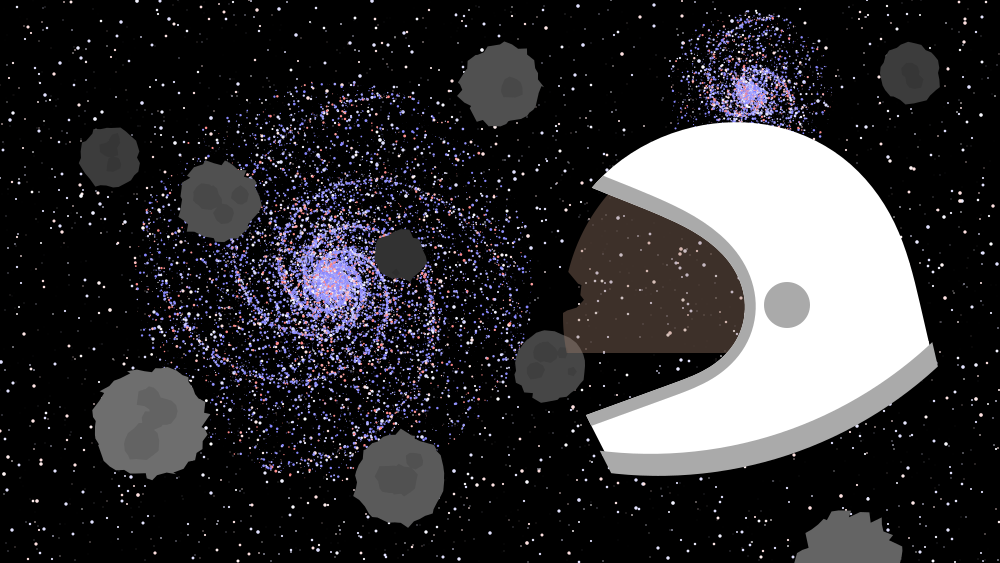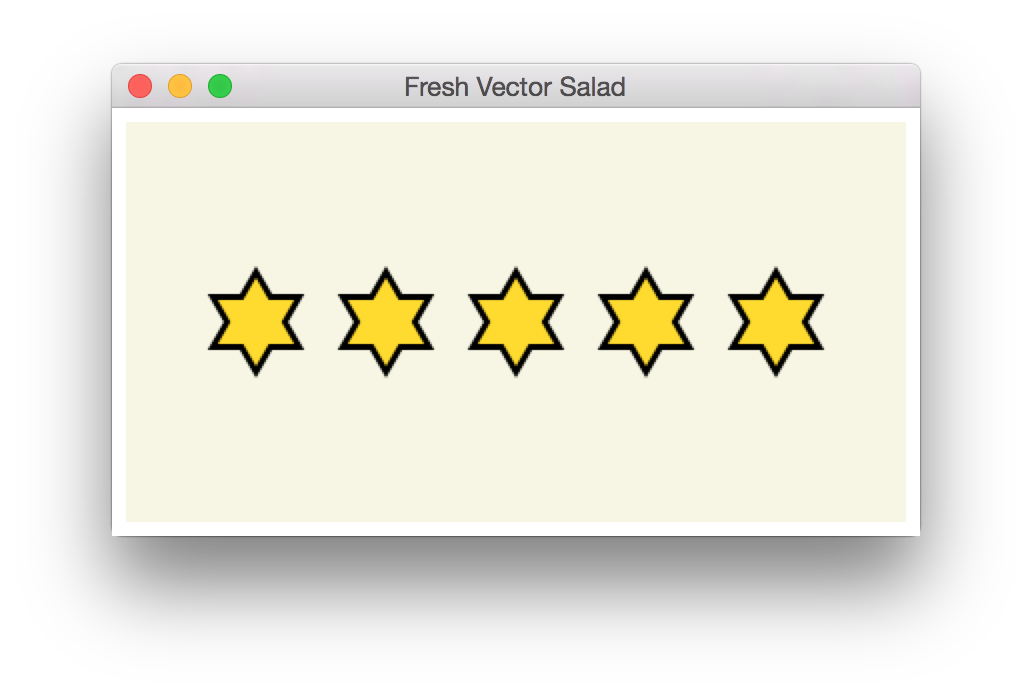
Security News
Nx npm Packages Compromised in Supply Chain Attack Weaponizing AI CLI Tools
Malicious Nx npm versions stole secrets and wallet info using AI CLI tools; Socket’s AI scanner detected the supply chain attack and flagged the malware.

Create art and practical design such as the space scene above with descriptive Ruby code!
The companion tool for live design can be found here: fresh_vector_salad
VectorSalad has a number of features common to graphics tools, and some that are less common. It's still in development so may not have the breadth of features that established tools have, but it has enough to accomplish a range of graphical tasks.
As most computers come with Ruby installed I won't dwell on this, but a recent version (2.2) is required. It must also be MRI Ruby as C extensions are used.
Installing vector_salad and fresh_vector_salad is done simply by installing their corresponding gems. At the command line:
gem install vector_salad
gem install fresh_vector_salad
Now you'll need a design document to compile and render. Here's a very simple example VectorSalad design that creates gold stars:
rect(390, 200, fill: "beige") # background
(1..5).each do |n| # repeat 5 times
# make a star from the union of two triangles
union(fill: "gold", stroke_width: 3, stroke: "black") do
triangle(25)
triangle(25).flip_x
end.move(n * 65, 100) # move stars at intervals horizontally
end
Save this document as gold_stars.rb, then it can be converted to SVG with the following command:
vector_salad -f path/to/gold_stars.rb
That will output the SVG, you probably want to save it to a file in a standard UNIX way:
vector_salad -f path/to/gold_stars.rb > path/to/gold_stars.svg
The SVG file can then be viewed with most modern web browsers, image viewers, or rendered with Inkscape (I leave installing and using Inkscape to you). A more interactive way of compiling, rendering and viewing VectorSalad files is with the companion fresh_vector_salad command line tool. The following command reads a Ruby VectorSalad file, compiles and saves it to an SVG file of the same name, renders it using Inkscape (must be in your path) to a PNG image file of the same name, and finally displays the image. Note an absolute path must be provided here.
fresh_vector_salad -f /absolute/path/to/file/gold_stars.rb
The window displayed looks as follows on OS X.

If you leave fresh_vector_salad running, try changing the design file, e.g. making the stars green. When you save, fresh_vector_salad will automatically detect the change, re-compile and display the new result. This makes doing "live" design with VectorSalad quick and easy.
Further information on the usage of these command line tools can be found by running them with the --help flag. Further examples can be found in the examples folder.
See the full Documentation for more usage info.
git checkout -b my-new-feature)rake or an individual test rake test:example[circles])git commit -am 'Add some feature')git push origin my-new-feature)The test suite is automatically generated from examples for integration testing. Here's how it works. Each example in the /examples folder was manually created, run, and visually inspected for correctness (both the image and SVG output). The test suite re-runs all of the examples comparing the new SVG output with the old expected output to make sure nothing has changed.
The whole suite can be run with rake test or just rake. They should all pass, of course. You can see more details including execution time with rake test TESTOPTS="-v".
An individual example test can be run with rake test:example[circles]. The name in the square brackets must be the name of a .rb file in the /examples folder. It can also be a partial "starts with" name, e.g. rake test:example[circle] will match both "circle_line_segments" and "circles".
Several of the examples use randomness. If you re-run those examples then the output will change each time, this is expected and great for demos. You must not commit this changed output though as the corresponding test will then fail. When the examples were initially created and when running the tests randomness is seeded to 1 (srand 1) so that they don't change. If you do need to change behaviour or add an example using randomness, please add srand 1 at the top of the example, run it, then remove the srand line.
FAQs
Unknown package
We found that vector_salad demonstrated a not healthy version release cadence and project activity because the last version was released a year ago. It has 1 open source maintainer collaborating on the project.
Did you know?

Socket for GitHub automatically highlights issues in each pull request and monitors the health of all your open source dependencies. Discover the contents of your packages and block harmful activity before you install or update your dependencies.

Security News
Malicious Nx npm versions stole secrets and wallet info using AI CLI tools; Socket’s AI scanner detected the supply chain attack and flagged the malware.

Security News
CISA’s 2025 draft SBOM guidance adds new fields like hashes, licenses, and tool metadata to make software inventories more actionable.

Security News
A clarification on our recent research investigating 60 malicious Ruby gems.